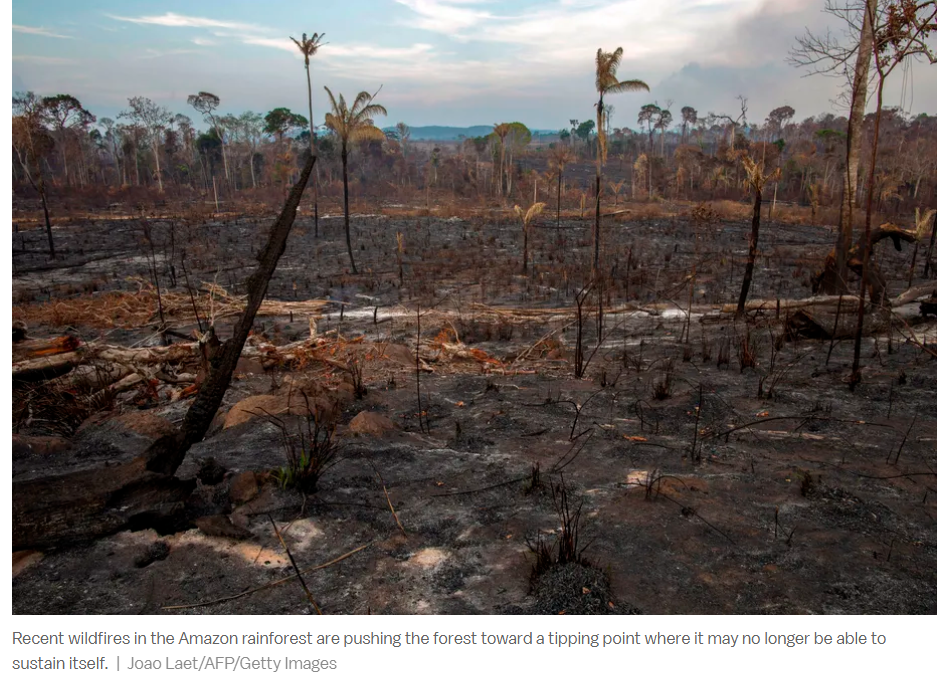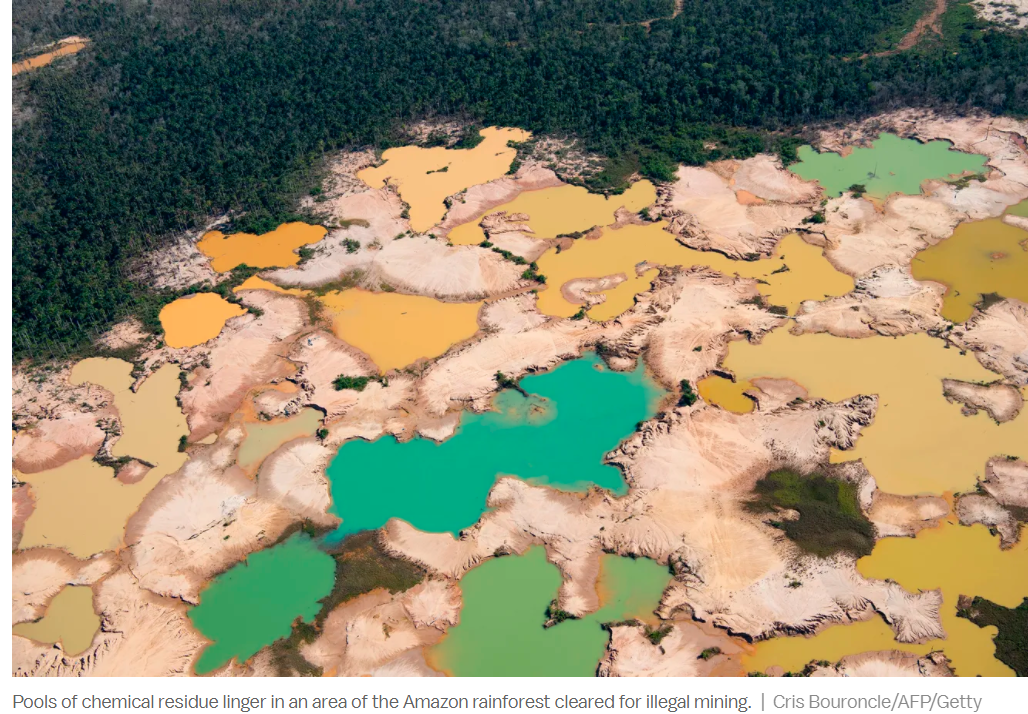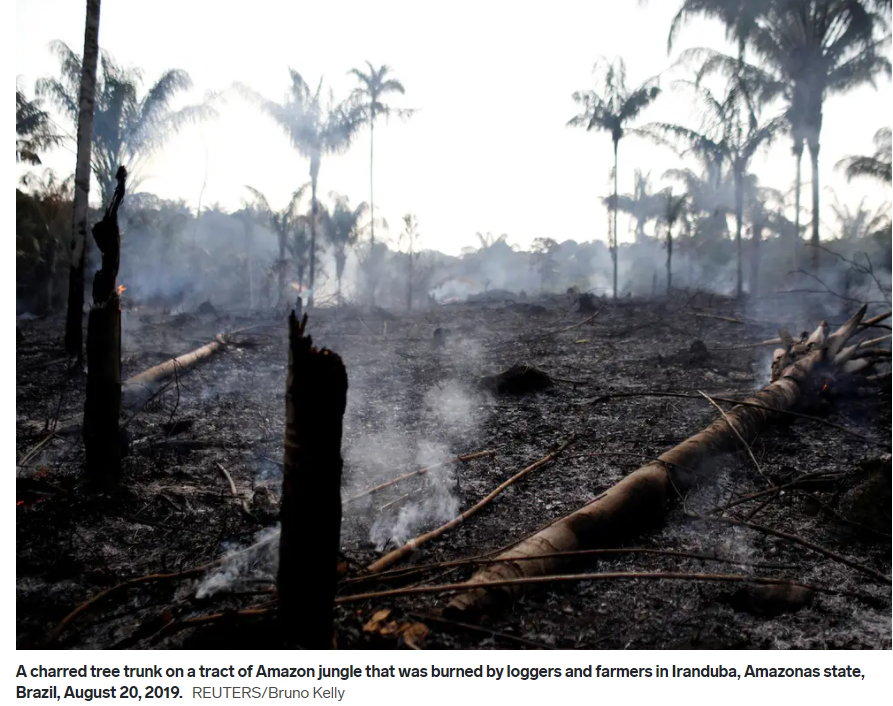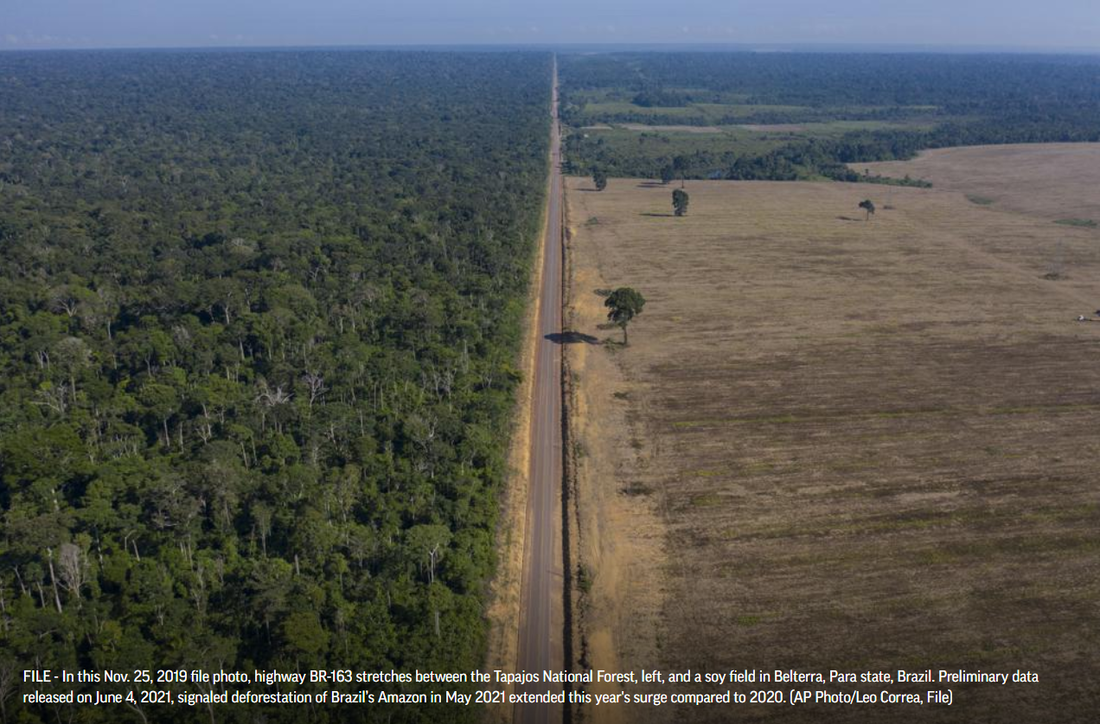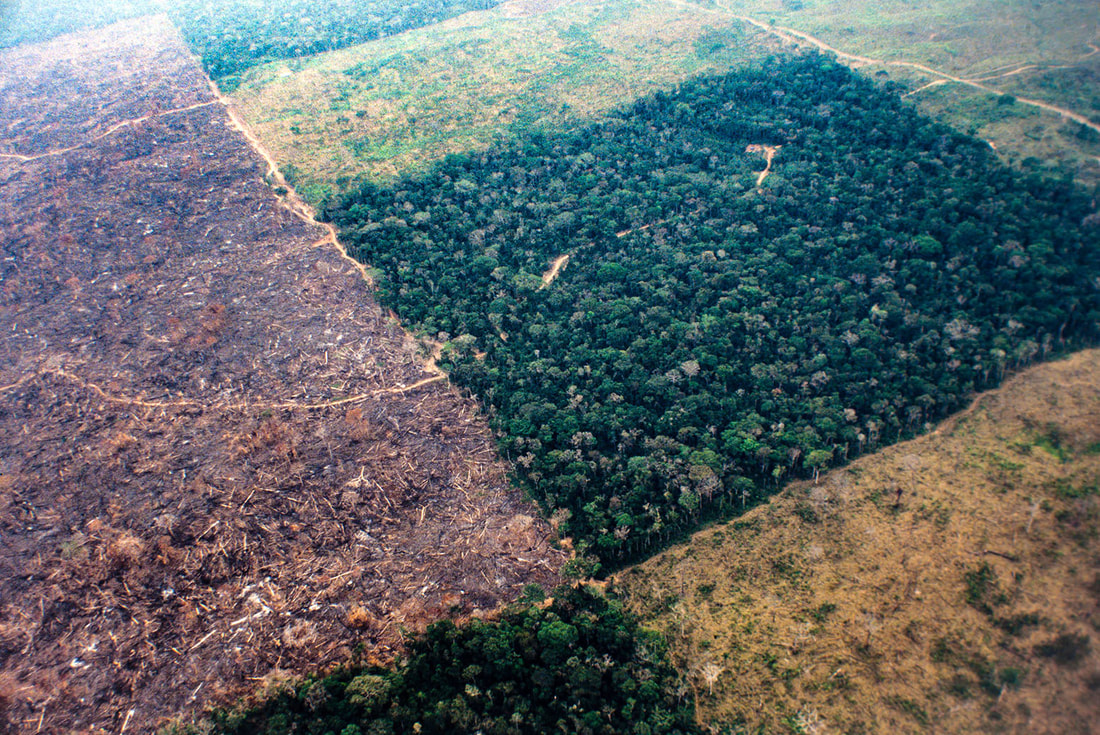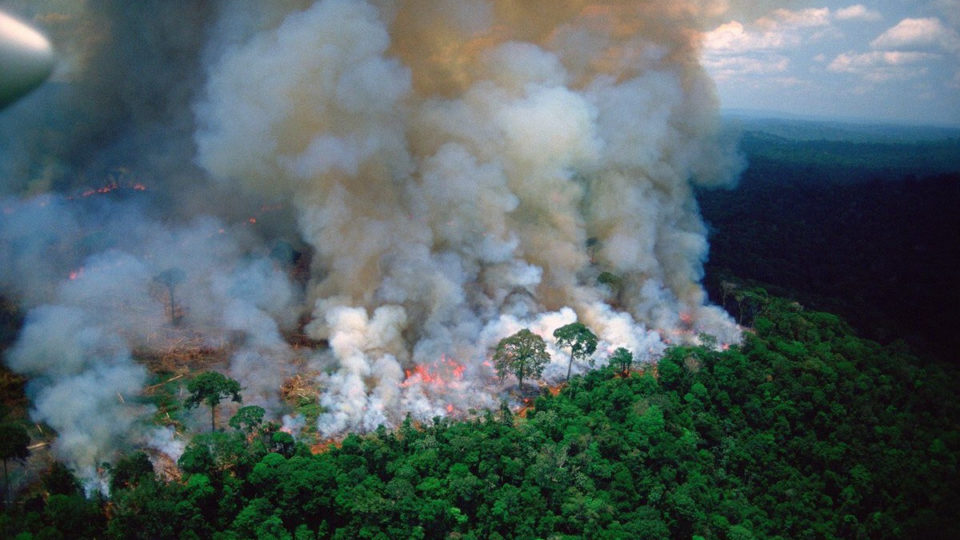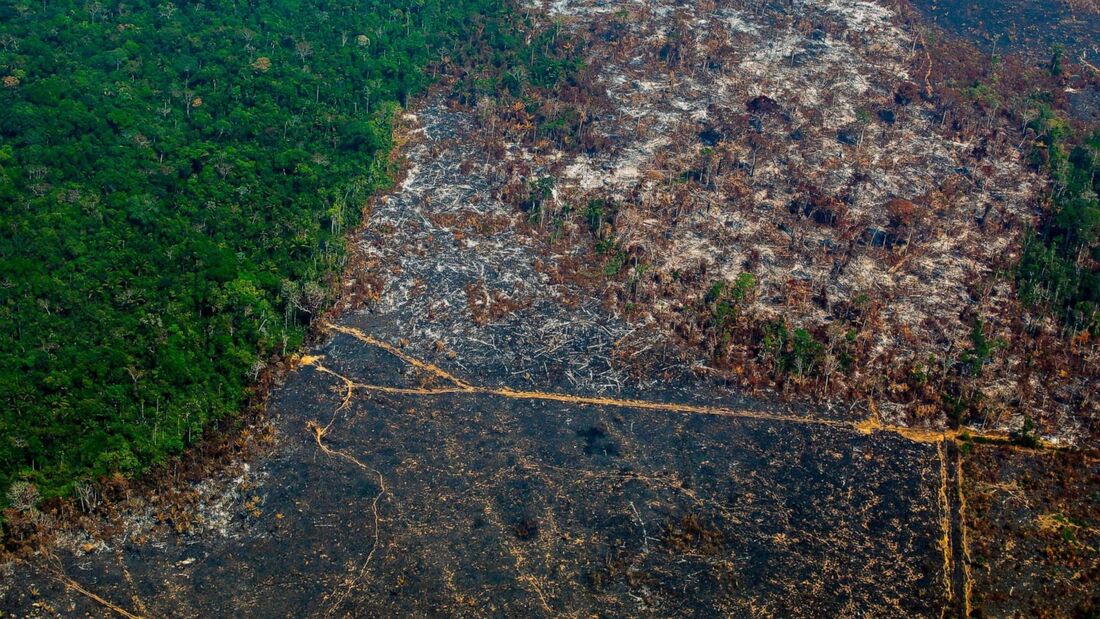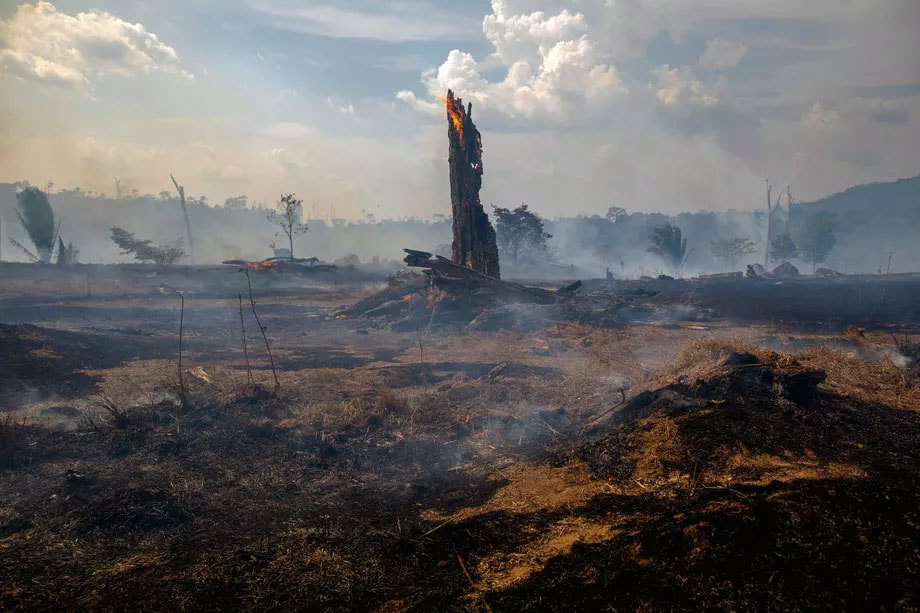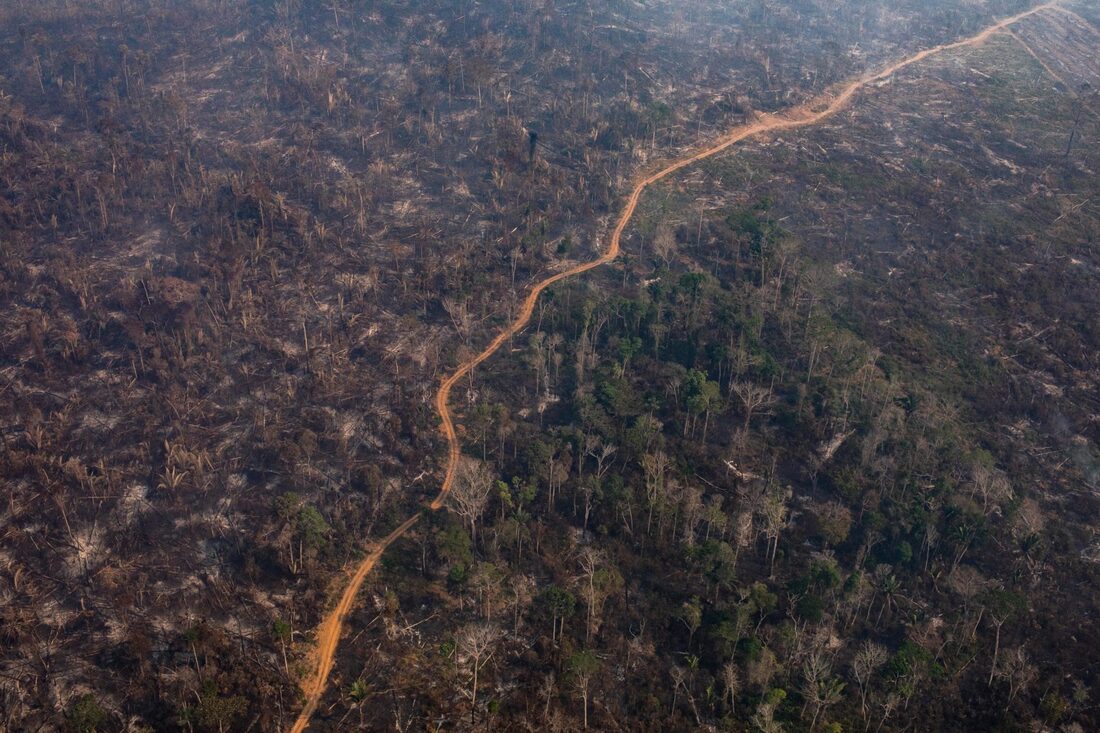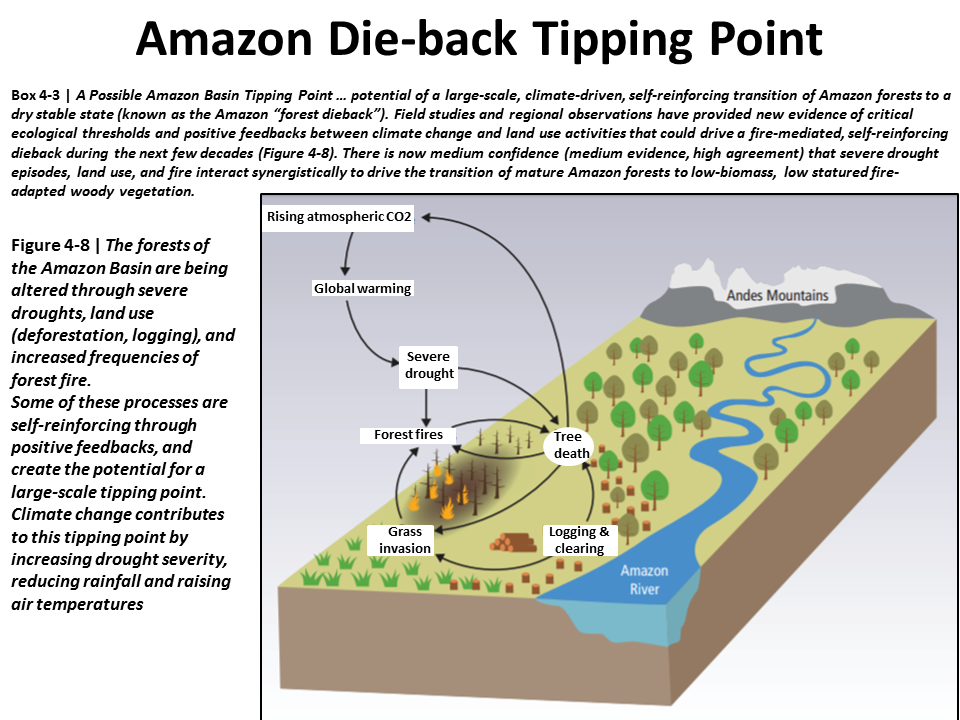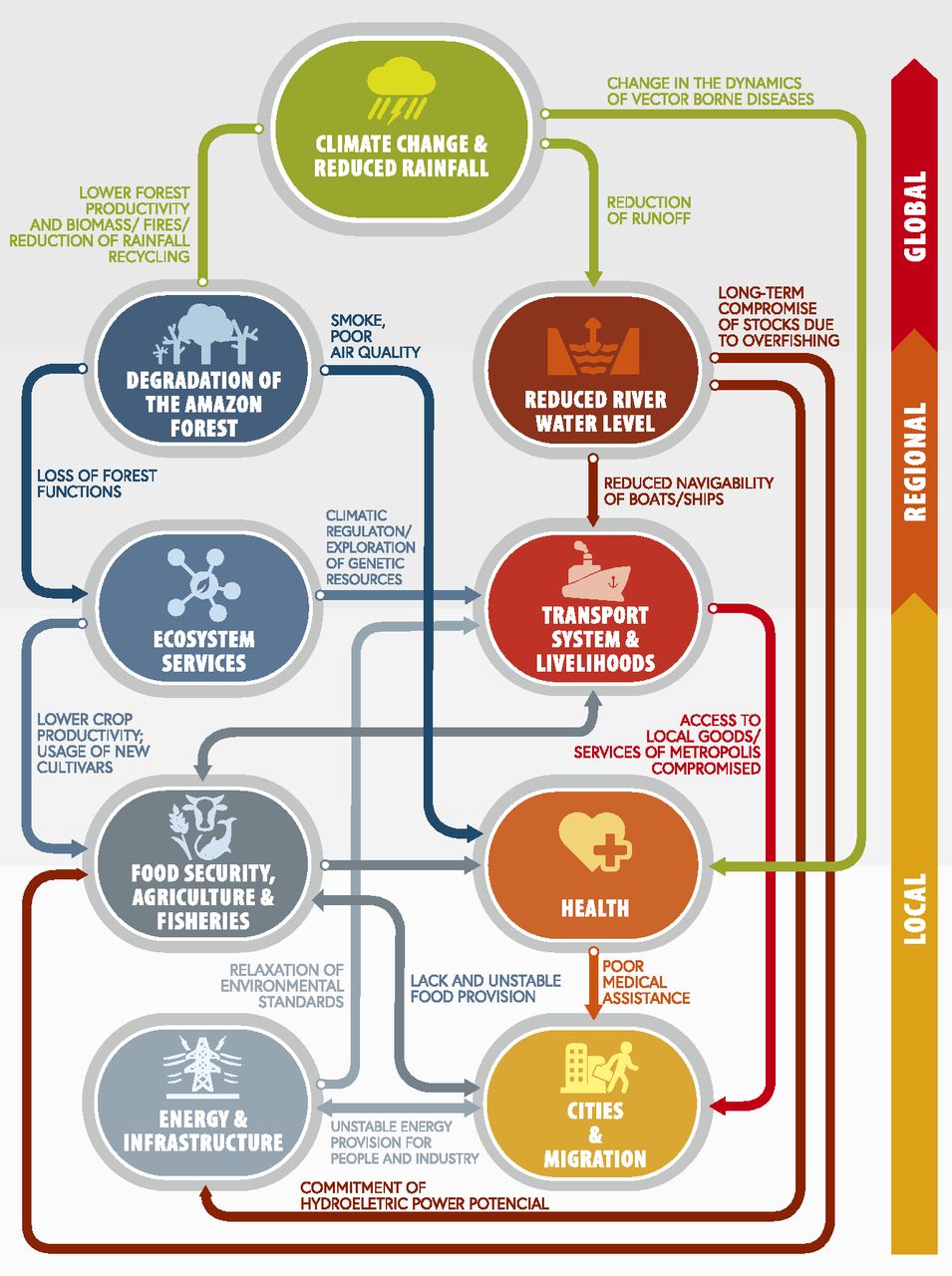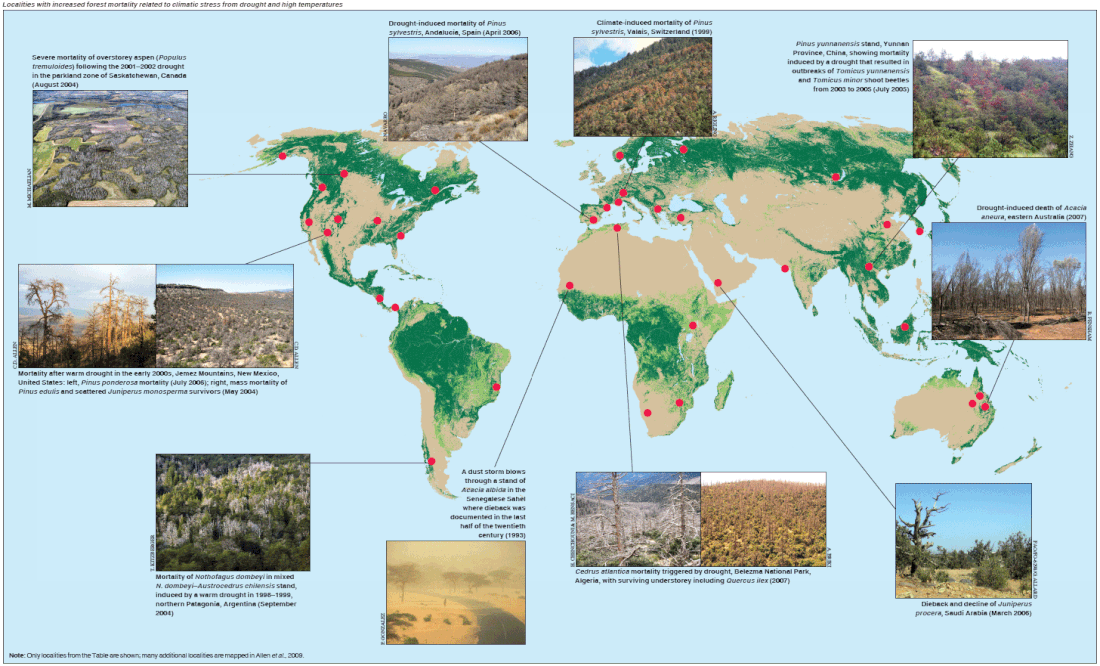30.10.2021
Amazon's 'Dieback' Scenario Releases Massive Carbon Into The Atmosphere
Wildfires and deforestation are pushing the Amazon rainforest toward a dieback scenario: an irreversible cycle of collapse. The rain in the rainforest is not an accident of geography or meteorology. The towering mahogany, kapok, and Brazil nut trees of the Amazon play important parts in the orchestra of the region’s water system. The trees take in rainwater through their roots, move it up into the canopy, and release it into the air, a process called evapotranspiration. The trees also release volatile organic compounds that react to form tiny particles. These particles serve as nucleation points to form clouds and eventually lead to more rainfall. Multiply this pattern by the hundreds of billions of trees in the rainforest and you get a powerful mechanism for recycling water and generating rainfall that keeps even the thirstiest of trees quaffed in hot tropical weather. This rainfall pattern helps sustain agriculture throughout Brazil and top up reservoirs that hydrate major cities, feeding and quenching the thirst of millions. But these trees are rapidly disappearing, along with the shrubs, grasses, fungi, and soil bacteria that work alongside them to circulate moisture. The rate of deforestation in the Amazon has picked up again after years of decline, with roughly a soccer field-size area lost every minute. Once the rainforest loses a certain amount of area, this orchestra will fall out of tune. There will not be enough remaining tropical woodlands to continually evaporate and condense moisture through the forest. Without this cycling of rainfall, downwind vegetation will not get enough water. That flora in turn will weaken and move less moisture through the air, resulting in less rainfall for the forested areas even further downwind. These parched trees will become more vulnerable to pests and fire. The mighty stalwarts of the Amazon will shrivel up, and a wave of death will start at the periphery and propagate throughout as much of it degrades from a dense tropical forest into a sparse savanna. The cycle will continue without our input. And there will be little we can do to stop it. This is a scenario known as a forest dieback. Credit: DW
Poverty deprives people of adequate education, health care and of life's most basic necessities- safe living conditions (including clean air and clean drinking water) and an adequate food supply. The developed (industrialized) countries today account for roughly 20 percent of the world's population but control about 80 percent of the world's wealth.
Poverty and pollution seem to operate in a vicious cycle that, so far, has been hard to break. Even in the developed nations, the gap between the rich and the poor is evident in their respective social and environmental conditions.
Poverty and pollution seem to operate in a vicious cycle that, so far, has been hard to break. Even in the developed nations, the gap between the rich and the poor is evident in their respective social and environmental conditions.
